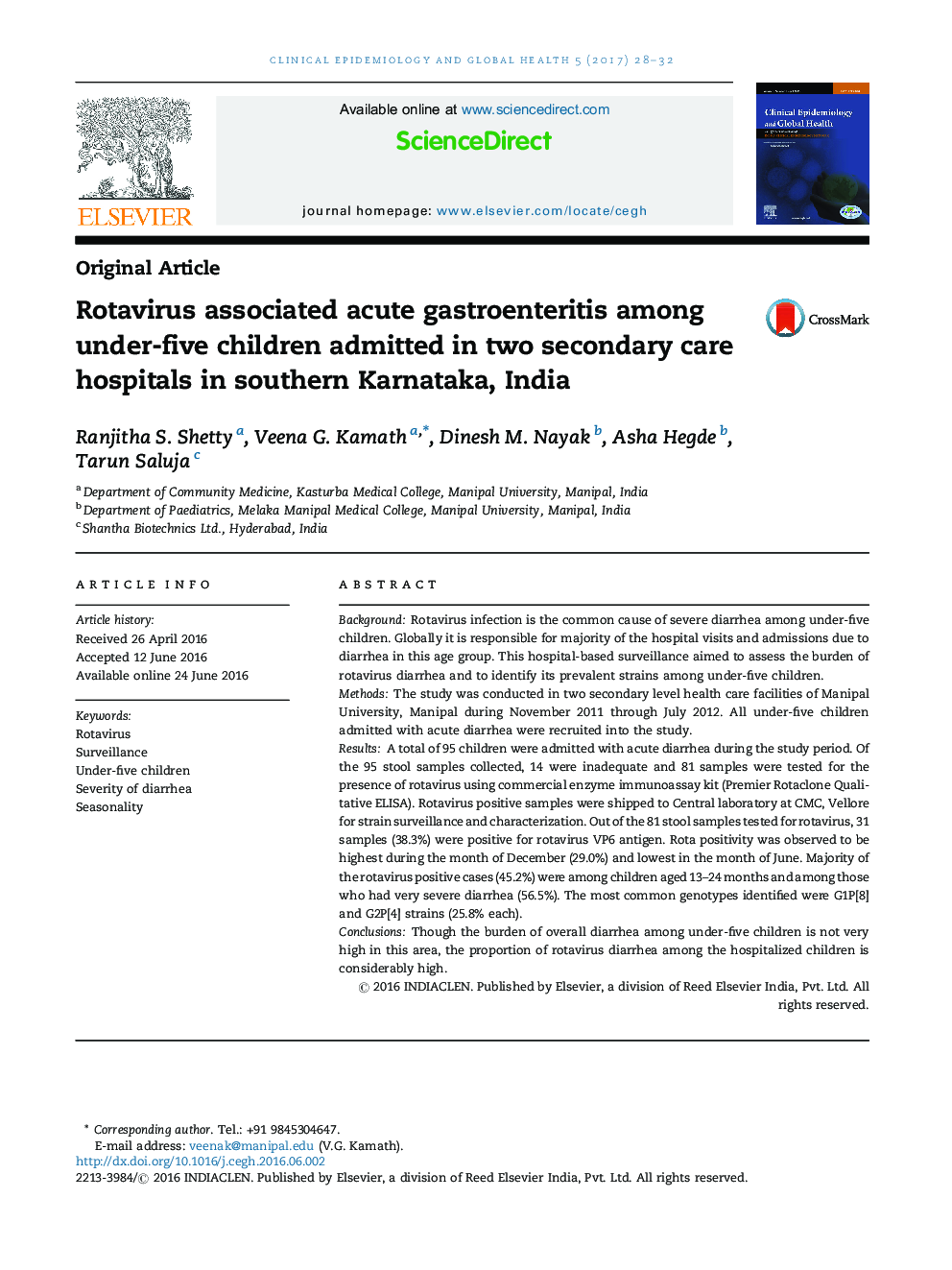| کد مقاله | کد نشریه | سال انتشار | مقاله انگلیسی | نسخه تمام متن |
|---|---|---|---|---|
| 5671408 | 1408050 | 2017 | 5 صفحه PDF | دانلود رایگان |
کلید واژه ها
1.مقدمه
2. مواد و روش ها
2.1 ارزیابی بالینی افراد
2.2 جمع آوری نمونه ی مدفوع
2.3 شناسایی روتاویروس
2.4 تحلیل داده ها
3. نتایج
جدول 1 – توزیع اسهال کلی و اسهال ناشی از عفونت روتاویروس در بین جمعیت مطالعه
جدول 2 – ویژگی های کودکان مبتلا و غیر مبتلا به روتاویروی بستری شده با التهاب حاد معده وروده
جدول 3 – مثبت بودن عفونت روتاویروی در دسته ی شدت اسهال در بین جمعیت مطالعه براساس سیستم امتیازدهی وسیکاری
شکل 1 – توزیع ماهیانه ی موارد اسهال (n = 95)
شکل 2 – توزیع سویه های روتاویروس به شکل انواع G & P (n = 31).
4. بحث و بررسی
BackgroundRotavirus infection is the common cause of severe diarrhea among under-five children. Globally it is responsible for majority of the hospital visits and admissions due to diarrhea in this age group. This hospital-based surveillance aimed to assess the burden of rotavirus diarrhea and to identify its prevalent strains among under-five children.MethodsThe study was conducted in two secondary level health care facilities of Manipal University, Manipal during November 2011 through July 2012. All under-five children admitted with acute diarrhea were recruited into the study.ResultsA total of 95 children were admitted with acute diarrhea during the study period. Of the 95 stool samples collected, 14 were inadequate and 81 samples were tested for the presence of rotavirus using commercial enzyme immunoassay kit (Premier Rotaclone Qualitative ELISA). Rotavirus positive samples were shipped to Central laboratory at CMC, Vellore for strain surveillance and characterization. Out of the 81 stool samples tested for rotavirus, 31 samples (38.3%) were positive for rotavirus VP6 antigen. Rota positivity was observed to be highest during the month of December (29.0%) and lowest in the month of June. Majority of the rotavirus positive cases (45.2%) were among children aged 13-24 months and among those who had very severe diarrhea (56.5%). The most common genotypes identified were G1P[8] and G2P[4] strains (25.8% each).ConclusionsThough the burden of overall diarrhea among under-five children is not very high in this area, the proportion of rotavirus diarrhea among the hospitalized children is considerably high.
Journal: Clinical Epidemiology and Global Health - Volume 5, Issue 1, March 2017, Pages 28-32
